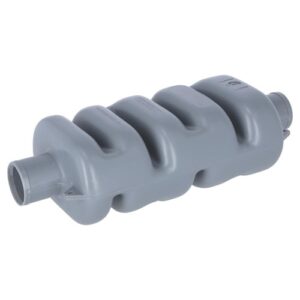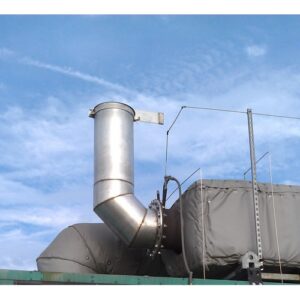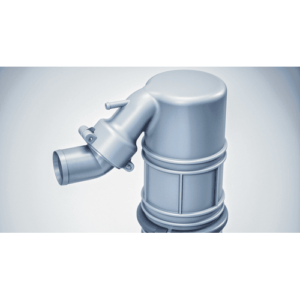Key Features of Marine Exhaust Silencer
1. Types and Acoustic Design of Marine Exhaust Silencers
Marine exhaust silencer comes in reactive, absorptive, and combination types. Each design targets specific frequency ranges and decibel reduction levels, helping tailor noise control based on engine size and application.
2. Construction and Materials
Manufacturers use stainless steel, aluminized steel, or corrosion-resistant alloys for the housing. Internal baffles are built with high-temperature insulation materials to resist heat, salt exposure, and mechanical fatigue.
3. Noise Reduction and Performance of Marine Exhaust Silencer
Silencers reduce engine and generator noise by up to 35–50 dB(A), depending on model and layout. Their chambered design breaks up exhaust pulses, preventing transmission of harsh tones into the hull and accommodation spaces.
4. Flow Capacity and Pressure Balance
Each silencer is engineered to maintain balanced backpressure within optimal limits, protecting engine performance. Proper flow management ensures no loss in exhaust efficiency or overheating, even during continuous operation.
5. Installation and Integration of Marine Exhaust Silencer
Marine exhaust silencers fit seamlessly into wet or dry exhaust systems using standard flanges and clamps. They can be mounted horizontally or vertically, depending on space and routing needs in engine compartments.
6. Thermal Insulation and Heat Handling
Silencers feature thermal jackets or insulation layers to contain heat, reducing the risk of burns or heat transfer to nearby components. This also supports safer operation in engine rooms and improves overall thermal efficiency.
7. Maintenance and Lifespan of Marine Exhaust Silencer
With no moving parts and rugged construction, these units require minimal maintenance. Periodic inspection for soot buildup or corrosion helps maintain long service life and consistent acoustic performance.
8. Compliance and Classification
All marine exhaust silencers comply with IMO and MARPOL regulations on noise and emissions. Products are certified by DNV, ABS, and Lloyd’s Register for use on both commercial and leisure vessels.



